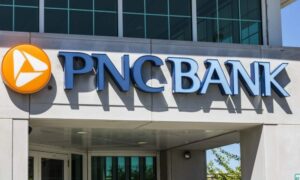Technology
PNC Bank N.A. announced on Jan. 27 that it has struck a definitive deal to buy payment gateway provider Tempus Technologies, Inc. This new team-up will allow their business customers to handle their receivables and payables via one channel, covering all rails. According to a report at Pymnts.com:
Read MoreNo one has to tell you the revenue cycle automation process is complex, and getting more so every year. That’s why it’ll come as no surprise that Healthcare Finance News is reporting that about 30% of health systems and hospitals are unable to manage their revenue cycle automation efforts without at least two vendors. The numbers were gathered via the Healthcare Financial Management Association’s Pulse Survey program, fielded between May 19, 2020 and June 22, 2020 among 587 chief financial officers and revenue cycle leaders at various health systems.
Read MoreHere’s a paradox we enjoy seeing: Even as it’s proclaimed all over the place that “checks are in decline,” and “checks are alien to Millennials” — we see a forward-looking, technologically innovative payroll infrastructure startup system launch and call itself — Check.
Read MoreAn article at PaymentsJournal.com cites a 2019 survey by Aite Group indicating that only 18% of banks were at that point moving from a transaction-based revenue model to a data-based approach. While this figure is unlikely to have changed significantly since, PaymentsJournal.com goes on to note that data-driven payments are increasingly on the agenda for banks and we can expect more movement towards this.
Read MoreA recent webinar sponsored by Fiserv highlighted reconciliation challenges faced by modern financial institutions as so many consumers adopt digital channels for payments. Fiserv’s 2020 Expectations & Experiences: Consumer Payments survey found that digital payments are indeed on the rise and confidence with virtual payment cards — the Apple Wallet, for instance — is growing.
Read MoreArtificial intelligence is already playing a significant role in worldwide healthcare, but Michael Spencer, editor in chief at The Last Futurist, is here to assure you that we haven’t seen anything yet: The complexity and rise of data in healthcare means that artificial intelligence will increasingly be applied within the field. Several types of AI are already being employed by payers and providers of care and life sciences companies. AI is also starting to be used in pharma drug combinations and exploratory combinations and will drive a new era of biotechnology.
Read MoreIngo Money CEO Drew Edwards spent some time with PYMNTS CEO Karen Webster talking about distributed banking — aka banking-as-a-service — and how it differs from open banking. Edwards said that open banking is mostly about moving information, not about moving money between a consumer, her bank, and a third party, like the Robinhood app — at least for now. That data exchange makes it possible for a FinTech to step into the middle of the transaction but also makes the bank little more than the “dumb pipes” that serve as the funding source.
Read MoreWith COVID-19 vaccines being administered across the globe, the healthcare payments industry — like the world population in general — is feeling cautiously optimistic as 2021 begins. The industry faced many challenges throughout 2020, but healthcare technology companies stepped up and transformed the pandemic into an opportunity to innovate, calling the pandemic a “catalyst” to accelerate the digital transformation for healthcare.
Matt Hawkins, CEO of Waystar, provides predictions for healthcare payments in the new year in an article posted on Modern Healthcare.
The trading platform Blocktrade recently published their predictions for the coming year in the fintech and payment worlds. “We all know that 2020 was a highly unusual year – the Covid pandemic not only impacted the global economy, it also accelerated ongoing changes and developments in the Fintech and Payment industry.”
Read MoreWe have seen the banking and payments industries recover from the challenges of the COVID-19 Pandemic with a resurgence of checks and sustained volumes of other payments. With this recovery, banks and financial institutions can now refocus on automation and fraud prevention projects which have been delayed while the economy recovers.
Read More








